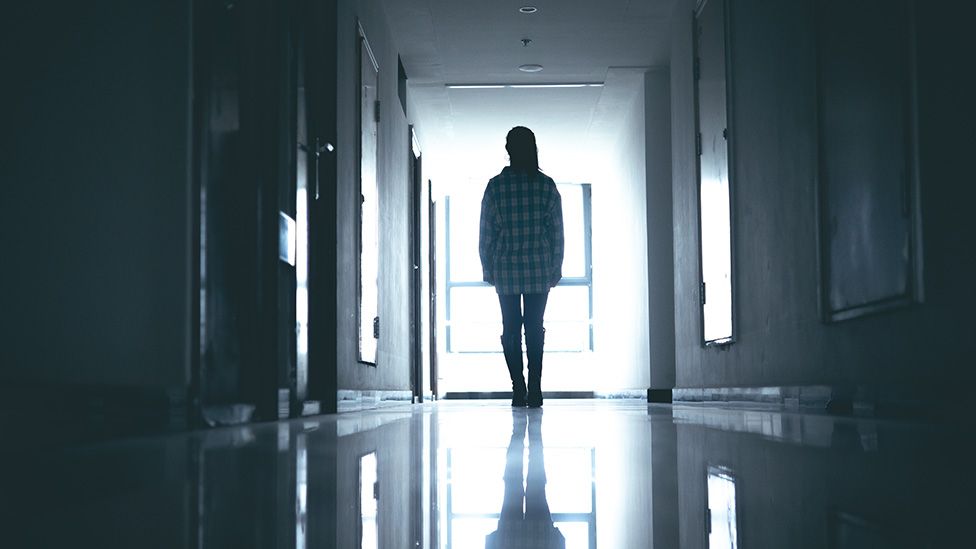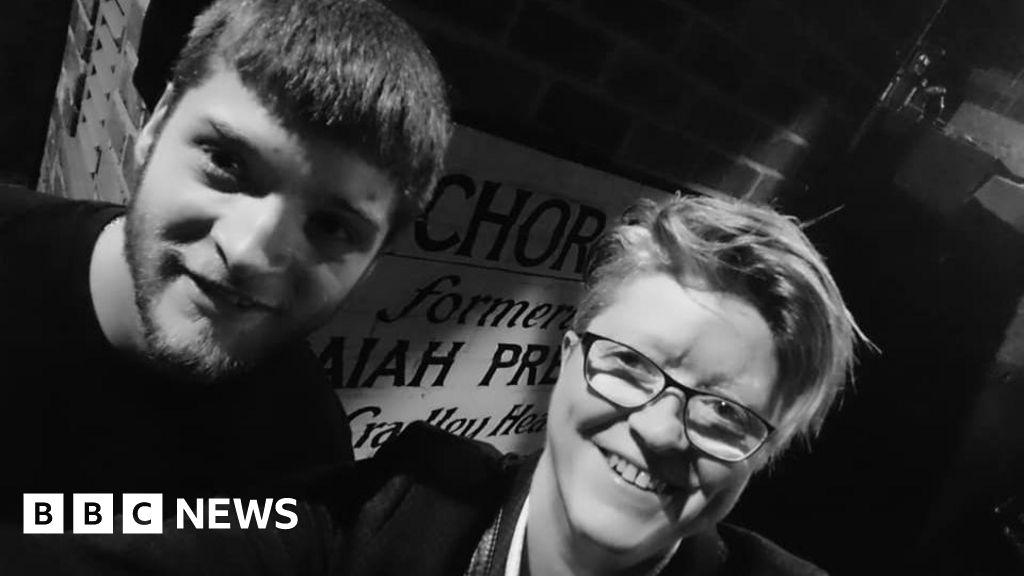ARTICLE AD BOX
 Image source, Getty Images
Image source, Getty Images
By Alison Holt
Social Affairs Editor
A safety investigation has warned that young people with complex mental health needs are being put at significant risk, by being placed on general children's wards in England.
The findings come from the Healthcare Safety Investigation Branch (HSIB).
Other families have since contacted the BBC describing similar situations.
The majority had faced similar difficulties getting appropriate support.
The HSIB - which is a government-funded body - says that paediatric wards are designed to care for patients who only have physical health needs and not for those with mental health needs.
It describes the situation in 18 hospitals it visited as "challenging", and 13 were described as "not safe" for children who were suicidal or at risk of harming themselves to be on their paediatric wards.
Hospitals say they are seeing an increasing number of children with a combination of autism, learning disabilities and complex social and mental health needs.
NHS England says it has an ongoing transformation programme to improve mental health services for children and young people, including adapting hospital environments for those with "sensory needs".
The HSIB started the investigation after a young patient on a paediatric ward tried to harm themselves and staff.
The child was waiting for a mental health assessment. They managed to abscond from the ward and on two occasions took a drugs overdose.
Two weeks ago, the BBC told the story of 16-year-old Molly who has autism, high levels of anxiety and eating problems.
Molly, who has autism, spent several months in a children's ward
She spent nearly seven months in a side room on a children's ward at the Queen Alexandra Hospital in Portsmouth, because of a shortage of places that could provide her with the support and therapy she needed.
Her family says she found the noisy environment traumatic. Despite having agency mental health nurses watching her 24 hours a day, she ran away from the hospital once and was able to seriously harm herself on a number of occasions. She was also restrained numerous times.
In April, her behaviour became so distressed that the children's ward closed to other patients for 10 days. She was then moved to a mental health unit, where she is doing better.
Her local health and care system said it was "very sorry" it had not been able to support her in a more suitable environment, when "she was most vulnerable".
Molly's story prompted other families to get in touch with the BBC.
Julie's child, who has autism, spent a year in a side room of a children's hospital at the age of 15. The teenager, who does not want their name used, also has eating problems.
Julie says that her child was made to feel at fault, even though "they hadn't asked to be there". She says: "They'd been put there waiting for something that wasn't coming, and how can you... make a vulnerable child feel that they're just a difficulty and a brat."
Julie's child who has autism spent a year in the side room of a children's ward
Jo-Ann's 15-year-old daughter is being assessed for autism and mental health difficulties. She is currently in the burns unit at a children's hospital. She has no physical problems for them to treat, but was moved there from the paediatric ward of another hospital. She was admitted after trying to harm herself nearly three months ago.
"She is classed as too vulnerable to go onto a mental health unit," Jo-Ann said. "She has fallen into no man's land."
She said the NHS and council-run children's services are trying to put together the support her daughter needs at home.
One parent also got in touch describing how terrifying it was for children who were physically very poorly, when there was someone being restrained or who was disruptive on the ward.
It is a mark of HSIB's significant concern about the situation that it decided to publish this interim report, before it has finished its full investigation.
The report said paediatric wards contained many self-harm risks, including ligature points, and that they were busy, noisy places which were unsuitable for children experiencing a mental health crisis, or with sensory needs, for instance, because they have autism.
It found that therapeutic help was limited or non-existent and children deteriorated as a result.
Molly's hospital room - her autism meant she found the noise of the ward traumatic
HSIB said on one paediatric ward there were more than 70 security incidents over three months relating to children with high-risk behaviours. Most involved the young person being physically restrained.
"In just over half of the security incidents reported, the child or young person had been sedated, sometimes requiring multiple attempts (up to seven) for the sedation to become effective," it said.
The report said on occasions nearly all the paediatric nursing teams on different wards could be involved in trying to support patients whose behaviour was high risk.
Staff told the investigators they were concerned about the "negative psychological impact" it was having on other patients and their families.
HSIB said it saw "vulnerable and unwell children and babies next to or near a young person who was trying to harm themselves and/or whose behaviour could be violent and aggressive".
The report says there were many incidents where staff were assaulted, and some hospitals, which were struggling to recruit and retain staff, described their workforce as "collapsing".
An NHS England spokesperson said: "The NHS will be reviewing the concerns raised by HSIB and will consider them as part of ongoing work to improve care for the record number of children and young people with mental health needs that the NHS is treating.
"In some circumstances it can be appropriate for young people to receive mental health care in acute settings, such as for treatment of physical health needs, and to support staff in doing this safely there is a clear framework to follow and an online training platform, while several areas are piloting services that better integrate mental and physical health care."

 1 year ago
42
1 year ago
42








 English (US) ·
English (US) ·